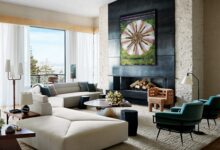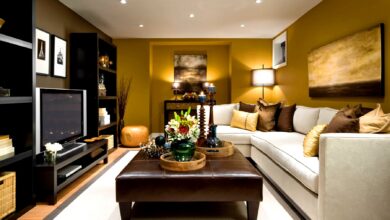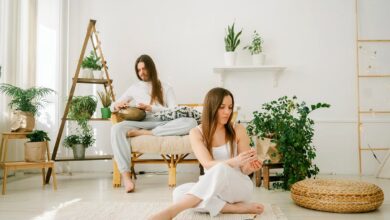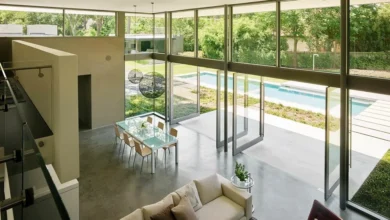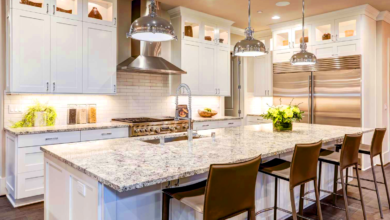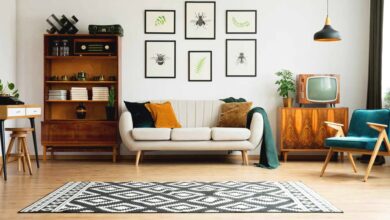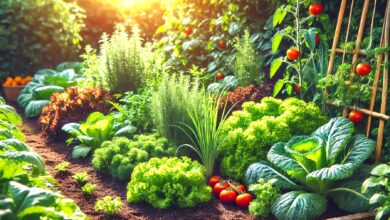Top 10 Interior Design Trends for 2025
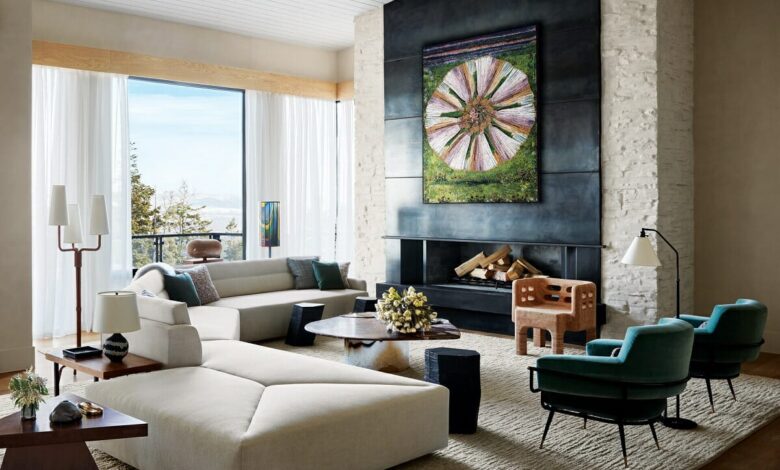
As we step into 2025, the world of interior design is experiencing a remarkable transformation that prioritizes wellness, sustainability, and personal expression. People are seeking spaces within their homes that promote wellness, relaxation, and comfort, while also reflecting their unique personalities. This year’s interior design trends 2025 represent a thoughtful departure from the stark minimalism of previous years, embracing warmth, natural elements, and meaningful connections to our environment.
The driving forces behind this year’s home design trends stem from our collective desire to create sanctuaries that nurture both body and mind. Warmth has emerged as the dominant theme, with homeowners craving warm tones, warm woods, and welcoming spaces, marking a significant shift from the cool whites and grays that previously dominated interior spaces. This evolution reflects a deeper understanding of how our environments impact our psychological well-being and daily lives.
Sustainable interior design has moved from trend to necessity, with homeowners increasingly conscious of their environmental impact. The commitment to sustainability prioritizes furniture, decor, and design ideas that minimize carbon footprints, featuring reclaimed wood, bamboo, and recycled metals. This eco-conscious approach doesn’t compromise on style; instead, it enhances the authentic character of our living spaces.
Technology integration continues to play a pivotal role in modern interior design, but with a more subtle, human-centered approach. Smart home features are becoming seamlessly integrated into daily life, enhancing comfort and efficiency without overwhelming the aesthetic appeal of our homes. The focus has shifted from showcasing technology to making it an invisible yet powerful tool for improving our quality of life.
The 2025 home decor trends also emphasize the importance of creating multi-functional spaces that adapt to our evolving lifestyles. Post-pandemic living has taught us the value of flexible environments that can serve as workspaces, relaxation zones, and social gathering areas. This adaptability is reflected in furniture choices, room layouts, and design strategies that maximize both functionality and beauty.
1. Biophilic Design: Bringing Nature Indoors
Biophilic design stands as the most significant interior design trend 2of 025, fundamentally reshaping how we approach our living spaces. This concept seamlessly blends the indoors with the beauty of the natural world, featuring elements like lush greenery, natural materials, and soft, organic shapes. The movement goes far beyond simply adding a few houseplants to a room; it represents a comprehensive approach to creating environments that honor our innate connection to nature.
Biophilic design continues to play a prominent role, but where it once focused on a few houseplants, it’s now an integrated approach, with vibrant green walls, natural materials like wood and stone, and soft, organic shapes. This evolution reflects a deeper understanding of how natural elements can influence our mood, productivity, and overall well-being. Living walls, water features, and natural light optimization are becoming standard elements in contemporary interior design.
The psychological benefits of biophilic interior design are well-documented, with research showing reduced stress levels, improved air quality, and enhanced cognitive function in nature-integrated spaces. This trend particularly resonates with urban dwellers who seek to reconnect with the natural world despite limited outdoor access. Homeowners are seeking ways to connect with nature, even in urban environments, by introducing greenery, natural light, and organic materials.
Modern biophilic design incorporates advanced solutions like modular green walls, self-watering plant systems, and carefully selected low-maintenance species that thrive in indoor environments. These innovations make sustainable living spaces more accessible to busy homeowners while maintaining the authentic connection to nature that defines this trend.
2. Warm Neutral Color Palettes
The color landscape of 2025 interior design marks a decisive shift toward warmth and comfort. Flamboyant tones, earthy neutrals, and warm metallics are among the trending colors for 2025, adding depth, warmth, and sophistication to interiors. This transformation moves away from the cool, stark whites and grays that dominated previous decades, embracing instead the rich, nurturing qualities of earth-inspired hues.
Warm off-whites, rich tans, sophisticated beiges, and creamy ivories are establishing themselves as the foundation colors for modern home design. These neutral color schemes provide a versatile backdrop that allows homeowners to layer personality through textiles, artwork, and accent pieces while maintaining a cohesive, calming atmosphere throughout their homes.
The psychology behind this color trend reflects our collective need for security and comfort in an increasingly uncertain world. Warm neutrals create environments that feel safe, nurturing, and timeless, supporting both relaxation and productivity. These colors work particularly well in open-concept spaces, creating visual continuity while allowing for subtle zoning through varying shade intensities.
Professional designers are incorporating these warm neutrals through various applications: wall colors, large furniture pieces, window treatments, and flooring selections. The key to success lies in layering different tones within the same color family, creating depth and visual interest while maintaining the overall sense of harmony that makes these spaces so appealing.
3. Material Drenching: Monochromatic Luxury
Material drenching emerges as one of the most sophisticated luxury interior design trends for 2025. This technique involves decorating an entire room with one material, whether wood, stone, plaster, fabric, or something else, creating an immersive, cohesive environment that showcases the inherent beauty of natural materials.
This approach represents a more textural evolution of traditional monochromatic design, focusing on the sensory experience of materials rather than just visual color coordination. A room might feature rich walnut wood on walls, floors, and select furniture pieces, or showcase the varied textures of natural stone in multiple applications throughout a space.
The technique works particularly well in minimalist interior design approaches, where the focus shifts from decorative elements to the inherent beauty and craftsmanship of quality materials. Luxurious surfaces and finishes in bedrooms, bathrooms, kitchens, and living rooms continue to dominate interior design trends 2025, with large-format tiles and premium materials creating distinctive looks that elevate spaces beyond purely practical functions.
Successful material drenching requires careful attention to lighting, texture variation, and proportional balance. Designers achieve visual interest through different finishes of the same material – combining matte and glossy surfaces, rough and smooth textures, or varying the grain patterns and orientations to create subtle but impactful visual rhythms throughout the space.
4. Sustainable and Eco-Friendly Design

Sustainable interior design has transitioned from an optional trend to an essential practice in 2025, reflecting growing environmental consciousness and the urgent need for responsible consumption. As environmental issues take center stage, sustainability becomes an absolute priority, with recyclable materials, renewable energy, and environmentally respectful designs serving as fundamental pillars.
This commitment to eco-friendly home design manifests in multiple ways: selecting furniture made from reclaimed or rapidly renewable materials, choosing low-VOC paints and finishes, investing in energy-efficient lighting and appliances, and prioritizing locally sourced products to reduce transportation impacts. The circular economy principles are increasingly influencing design decisions, with emphasis on durability, repairability, and end-of-life recyclability.
Green interior design goes beyond material selection to encompass the entire lifecycle of design decisions. Water conservation features, natural ventilation strategies, and passive solar design principles are being integrated into residential projects. Smart home technologies that monitor and optimize resource consumption are becoming standard features rather than luxury additions.
The aesthetic appeal of sustainable design has evolved significantly, with eco-friendly materials now offering the same luxury appeal as traditional options. Recycled glass countertops, bamboo flooring, cork wall coverings, and reclaimed wood furniture provide stunning visual impact while supporting environmental responsibility. This evolution demonstrates that sustainability and style are not mutually exclusive but rather complementary approaches to thoughtful design.
5. Bold Accent Colors and Patterns
While neutral foundations dominate 2025 color trends, bold accent colors provide essential personality and energy to interior spaces. Moody interior paint colors, with dark purple as just one standout, and bold patterns that exude personality are defining design approaches, creating dynamic environments that reflect individual taste and creativity.
These colorful interior design elements work best when applied strategically – through accent walls, statement furniture pieces, artwork, or textile applications. Rich jewel tones like emerald green, sapphire blue, and deep burgundy provide sophisticated contrast against warm neutral backgrounds, while maintaining the overall sense of harmony that defines contemporary design.
Pattern integration has become more confident and varied, moving beyond safe geometric designs to embrace organic, nature-inspired motifs, abstract artistic expressions, and cultural references that tell personal stories. The key lies in balancing pattern scale and intensity – combining large-scale statement patterns with smaller, more subtle designs to create visual hierarchy and prevent overwhelming the space.
Maximalist elements are finding their place within otherwise restrained environments, proving that bold choices can coexist with minimalist principles when applied thoughtfully. This approach allows homeowners to express creativity and personality while maintaining the calming, uncluttered feel that supports daily well-being.
6. Smart Home Integration
Smart home technology in 2025 focuses on seamless integration and intuitive functionality rather than conspicuous tech display. Integrating smart technologies into spaces allows for a more connected experience, but the emphasis has shifted toward invisible technology that enhances daily life without disrupting aesthetic harmony.
Modern home automation trends prioritize systems that learn and adapt to homeowner preferences, automatically adjusting lighting, temperature, and security settings based on daily routines and seasonal patterns. Voice control, smartphone apps, and AI-driven optimization work behind the scenes to create more comfortable, efficient, and secure living environments.
The integration extends to wellness-focused features: circadian rhythm lighting systems that support natural sleep cycles, air quality monitoring and purification, and acoustic optimization for better concentration and relaxation. These technologies support the broader trend toward homes as wellness sanctuaries, using data and automation to create environments that actively promote health and happiness.
Privacy and security considerations have become paramount in smart home design, with emphasis on local processing, encrypted communications, and user control over data sharing. The most successful installations balance convenience with security, providing homeowners with both technological benefits and peace of mind about their digital privacy.
7. Textural Variety and Tactile Elements
Textural interior design has gained unprecedented importance in 2025, as homeowners seek sensory richness that engages multiple senses beyond just vision. This trend emphasizes the importance of touch, sound, and even smell in creating truly immersive living experiences that support emotional well-being and stress reduction.
The approach combines various material textures within cohesive color palettes – pairing smooth marble with rough-hewn wood, soft bouclé fabrics with sleek metal accents, or woven natural fibers with polished stone surfaces. This tactile design strategy creates depth and interest while maintaining visual harmony through careful color coordination.
Cozy interior design elements play a crucial role in this trend, with emphasis on materials and surfaces that invite touch and interaction. Chunky knit throws, rough-textured ceramics, natural fiber rugs, and handcrafted wooden furniture provide opportunities for tactile engagement that digital-heavy lifestyles often lack.
Sound texture also contributes to this trend, with designers considering the acoustic properties of materials and surfaces. Soft textiles absorb sound and create intimate atmospheres, while harder surfaces reflect sound and create more energetic environments. This thoughtful approach to acoustic design supports different activities and moods throughout the home.
8. Curved and Organic Shapes
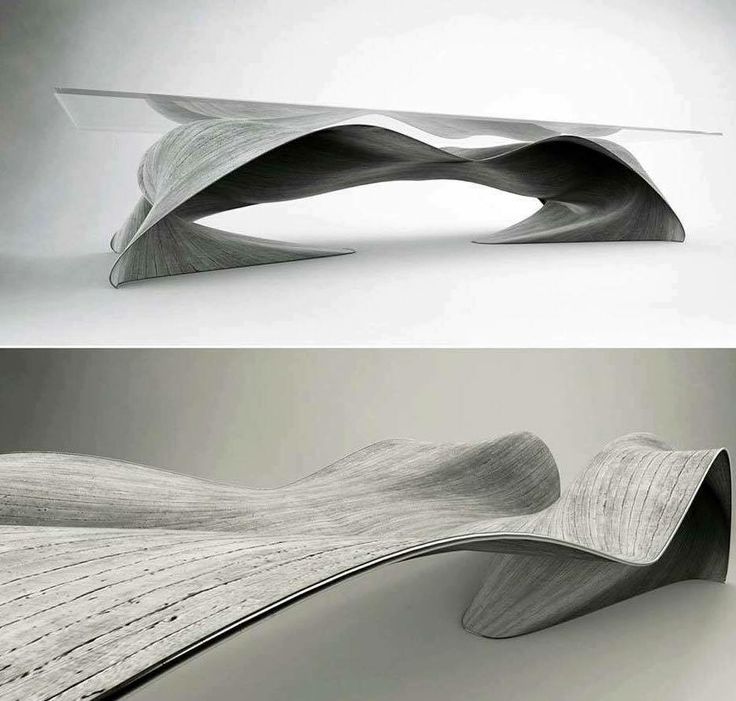
The reign of sharp angles and rigid geometries is giving way to curved furniture design and organic forms that echo natural shapes and patterns. Curved sofas and round tables create fluid lines throughout spaces, supporting the broader trend toward biophilic design and wellness-focused environments.
Organic interior design extends beyond furniture to architectural elements: curved walls, arched doorways, and flowing transitions between spaces create more dynamic and psychologically comfortable environments. These shapes reduce visual stress and create more welcoming, nurturing atmospheres that support relaxation and social interaction.
This trend reflects a deeper understanding of how the environment shapes human psychology and behavior. Curved forms are associated with safety, comfort, and natural beauty, while sharp angles can create subtle stress responses. The integration of organic shapes helps create homes that feel more like natural sanctuaries and less like manufactured boxes.
The application ranges from subtle – slightly rounded furniture corners and gentle curves in lighting fixtures – to dramatic – kidney-shaped kitchen islands, curved stairways, and flowing, sculptural room dividers. The key lies in balancing organic forms with functional requirements and maintaining visual cohesion throughout the space.
9. Multifunctional and Flexible Spaces
Flexible interior design has become essential as homes continue to serve multiple functions: workplace, school, gym, entertainment venue, and peaceful retreat. The 2025 home design trends emphasize adaptability and efficiency without sacrificing style or comfort, creating spaces that can transform to meet changing needs throughout the day and seasons.
Space-saving design solutions now incorporate sophisticated storage systems, transformable furniture, and modular arrangements that allow rooms to serve multiple purposes effectively. Murphy beds, expandable dining tables, mobile storage units, and modular seating systems provide flexibility while maintaining clean, uncluttered aesthetics.
The concept extends to lighting and technology systems that can adapt to different activities and moods. Adjustable LED systems provide task lighting for work activities, ambient lighting for relaxation, and party lighting for entertaining. Smart furniture pieces incorporate charging stations, speakers, and even air purification systems.
Open-concept design continues to evolve, with more sophisticated approaches to creating distinct zones within flowing spaces. Room dividers, level changes, lighting variations, and strategic furniture placement create psychological boundaries while maintaining visual and physical openness that makes homes feel larger and more connected.
10. Vintage and Antique Revival
The vintage interior design movement in 2025 represents more than nostalgic decoration; it embodies sustainability principles, craftsmanship appreciation, and personal storytelling through curated collections. Antique furniture trends focus on quality pieces that bring history, character, and environmental responsibility to contemporary homes.
This trend supports sustainable home decor by extending the lifecycle of existing furniture and decorative objects rather than constantly producing new items. Vintage and antique pieces often feature superior construction and materials compared to many contemporary alternatives, providing both aesthetic appeal and long-term value.
The integration approach has become more sophisticated, with vintage pieces serving as anchor elements within contemporary settings rather than creating complete period recreations. A single statement antique armoire might ground a modern bedroom, while vintage textiles add warmth and personality to minimalist living spaces.
Retro design elements are being reinterpreted through contemporary lenses, updating classic styles with modern functionality and materials. Mid-century modern furniture receives contemporary upholstery, while Victorian architectural details are simplified and adapted for current lifestyles. This evolution allows homeowners to enjoy historical design elements while meeting contemporary needs for comfort and functionality.
More Read: 30 Commercial Interior Design Leaders to Watch in 2025 in the USA
Conclusion
The top interior design trends 2025 reflect our collective evolution toward more thoughtful, sustainable, and wellness-focused living environments. From biophilic design that reconnects us with nature to smart home integration that enhances daily comfort, these trends prioritize human well-being alongside aesthetic appeal.
The shift toward warm neutrals, sustainable materials, and flexible spaces demonstrates our growing understanding of how environmental design affects our physical and psychological health. As we implement these home design trends 2025, we create spaces that not only look beautiful but actively support our happiness, productivity, and connection to both nature and community. The future of interior design lies in this holistic approach that considers the complete human experience within our homes.
